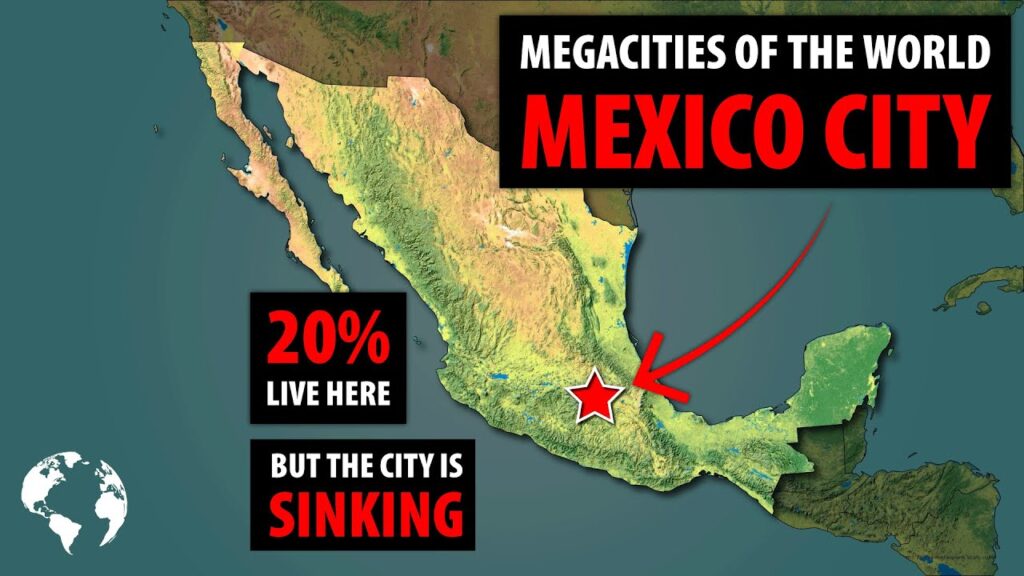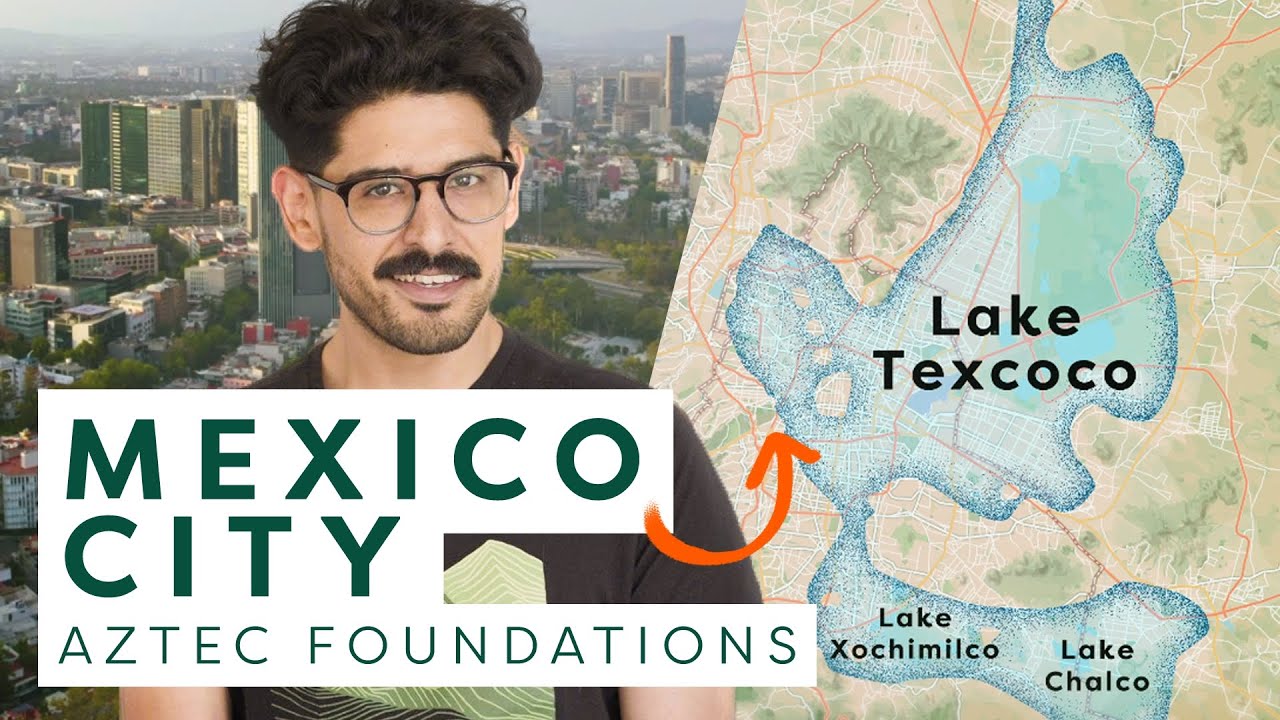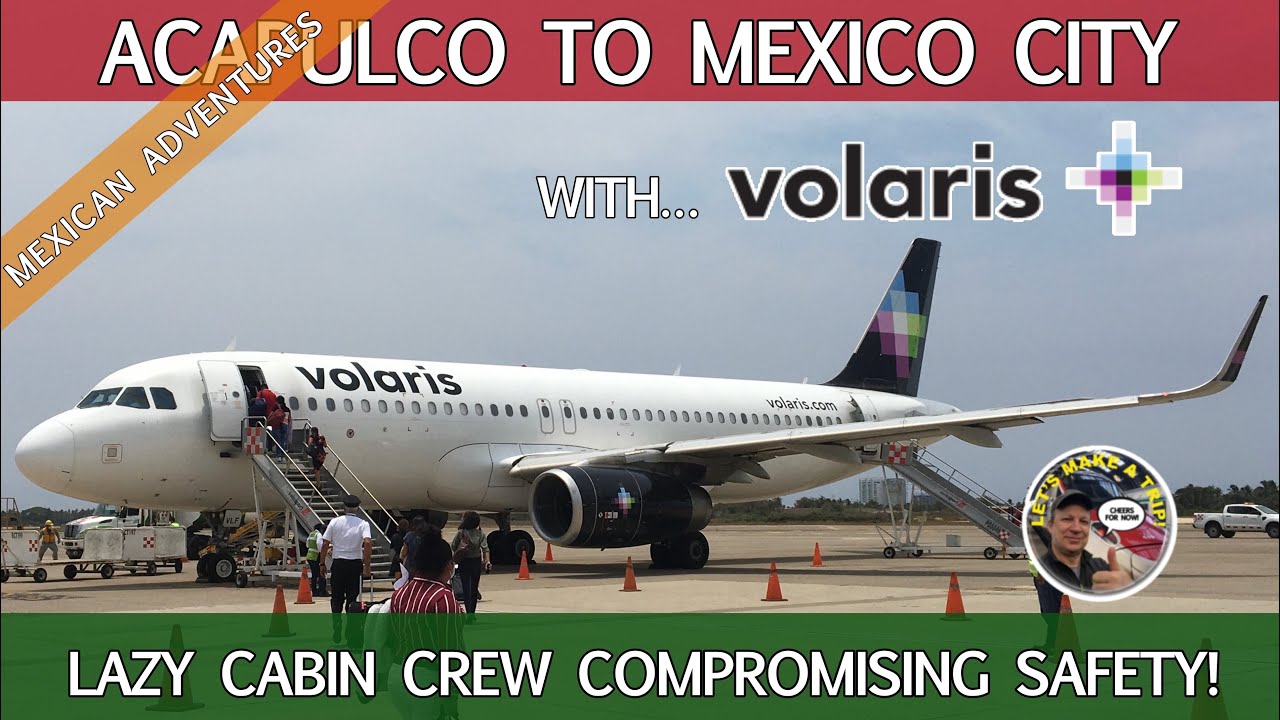Understanding the Causes of Subsidence in Mexico City
Exploring the vibrant city of Mexico can be an unforgettable adventure, but it’s essential to comprehend the environmental challenges it faces, notably the phenomenon of subsidence. Subsidence, the gradual sinking of the ground, is a critical issue confronting Mexico City, threatening its historic architecture and urban infrastructure. The causes of this occurrence are multifaceted and deeply rooted in the city’s geological and human history.
The primary cause of subsidence in Mexico City can be traced back to its geographical location. The city is built on a soft, compressible lake bed that once hosted the expansive Lake Texcoco. Over centuries, the heavy urban structures have exerted immense pressure on this soft soil, causing it to compact and the ground to sink. This natural predisposition, combined with the weight of modern constructions, has accelerated the subsidence process, posing a perennial challenge to maintaining the city’s stability.
Another significant contributor to Mexico City’s subsidence is the excessive extraction of groundwater. For decades, the city has drawn a considerable amount of water from the aquifers located beneath its surface to meet the water needs of its growing population. This over-extraction has led to a decrease in groundwater levels, causing the soil to compact further and exacerbate the sinking. The lack of adequate recharge of these aquifers due to insufficient rainfall and the impermeability of the urban landscape further complicates the issue.
Urbanization and the relentless expansion of Mexico City have also played a crucial role in its subsidence. The conversion of land from lakes, forests, and other natural landscapes into urban areas has increased the stress on the ground. The removal of vegetation and the sealing of the soil surface prevent the proper infiltration of rainwater, depriving the ground of natural moisture and contributing to its compaction. Additionally, the widespread construction of buildings, roads, and other infrastructure without considering the city’s unique geology has aggravated the sinking, making certain areas more susceptible to subsidence than others.
While subsidence in Mexico City presents a complex challenge, understanding its causes is the first step toward developing sustainable solutions to mitigate its effects. The interplay between natural geological factors and human activities underscores the need for comprehensive urban planning and conservation efforts to preserve the city’s rich heritage and ensure its future.
The Impact of Groundwater Extraction on Mexico City’s Stability
Mexico City, one of the most populous cities in the world, is facing a crucial environmental challenge that is largely invisible to the casual observer: the impact of groundwater extraction on its stability. The city is built on an ancient lakebed, and its foundations are continuously sinking due to the excessive withdrawal of groundwater. This phenomenon, known as land subsidence, is causing significant damage to buildings, streets, and the overall infrastructure of the metropolis.
The rapid urbanization and population growth have led to an increase in the demand for freshwater, further exacerbating the problem. Groundwater extraction has become a necessary evil in the city’s fight to supply water to its nearly 21 million residents. However, this has led to unequal subsidence rates across the city, with some areas sinking more than 20 centimeters per year. The differential sinking further threatens the structural integrity of the city’s infrastructure, leading to cracked foundations, ruptured pipelines, and disrupted transportation networks.
Moreover, the shrinking of the groundwater layers is causing an increase in the concentration of pollutants in the remaining water. This not only jeopardizes the quality of the water supply but also poses a significant health risk to the city’s inhabitants. The situation is further complicated by the city’s geographical location, which limits its options for sourcing freshwater from outside the valley.
Efforts to mitigate the impact of groundwater extraction have included the importation of water from distant sources, the construction of water recycling plants, and the implementation of rainwater harvesting systems. These measures, while essential, are not sufficient to reverse the damage already done. A more sustainable approach to water management and urban planning is urgently needed to ensure the long-term stability of Mexico City.
The consequences of groundwater extraction in Mexico City serve as a stark reminder of the fragile balance between urban development and environmental sustainability. As the city continues to sink at an alarming rate, it becomes imperative to address this issue with innovative solutions that can secure its future stability and the well-being of its inhabitants.
Exploring Solutions to Combat Subsidence in Mexico City
Mexico City, one of the most culturally rich and bustling metropolises in the world, faces a unique challenge that may not be immediately apparent to the casual observer: subsidence. The phenomenon of the city sinking an estimated one to two centimeters per year, in some areas even more, is a pressing concern that threatens its architectural integrity, infrastructure, and the safety of its residents. This issue stems from the excessive extraction of groundwater from the aquifer below the city, a practice that has been ongoing for decades to support the water needs of this ever-expanding urban area.
Efforts to combat subsidence in Mexico City are multifaceted and involve both high-tech solutions and community engagement initiatives. One promising approach is the injection of treated wastewater back into the aquifer to replenish the groundwater levels. This not only mitigates the rate of subsidence but also provides a sustainable model for water management in urban areas. Additionally, the use of advanced satellite monitoring allows scientists and engineers to track subsidence rates with unprecedented accuracy, facilitating timely interventions in the most affected areas.
Infrastructure redesign and construction practices have also taken center stage in the battle against subsidence. New buildings and structures are increasingly equipped with deep foundations that reach down to more stable layers of earth, significantly reducing their susceptibility to the sinking ground. Engineers are also exploring the use of lightweight materials and innovative architectural designs that exert less pressure on the soil, further aiding in reducing the impact of subsidence.
Community-based approaches play a critical role in addressing this issue as well. Public awareness campaigns aim to educate residents about the importance of water conservation and the direct link between water usage and subsidence. Programs encouraging rainwater harvesting and the responsible consumption of water resources empower individuals and communities to become active participants in the solution, ultimately contributing to a more sustainable and subsidence-resilient Mexico City.
While the challenge of subsidence in Mexico City is daunting, the combination of cutting-edge technology, engineering innovations, and community involvement offers a beacon of hope. By continuing to explore and implement these solutions, there is a clear path forward to not only slowing down subsidence but also securing a more stable and sustainable future for Mexico City and its inhabitants.
The Historical Context of Land Subsidence in Mexico’s Capital
Mexico City, sitting at an elevation of over 2,200 meters, has faced a unique urban challenge distinct from any other in the world: land subsidence. This phenomenon, where the ground systematically collapses or sinks, has historical roots deeply intertwined with the city’s development.
Originally, the Aztecs founded their capital, Tenochtitlán, in the 14th century on an island in the middle of a lake. This strategic location offered protection and resources but also laid the groundwork for the future challenges of land subsidence. The colonial Spanish conquest saw the draining of the lake to prevent flooding, beginning a cycle of environmental alteration that would continue to impact the city’s infrastructure.
As Mexico City expanded, the heavy demand for fresh water led to the excessive extraction of groundwater, accelerating the subsidence process. Buildings, streets, and entire neighborhoods began to sink at an alarming rate, with some areas experiencing a descent of up to nine meters over the last century. This subsidence has led to significant structural damage to historic and contemporary buildings alike, reshaping the city’s architectural landscape.
Efforts to combat this issue have included the importation of water from distant sources and the implementation of more sustainable urban planning measures. However, these initiatives face significant challenges due to the city’s rapid growth and the scale of the subsidence. The ongoing struggle with land subsidence in Mexico City is a testament to the complex interplay between human settlement, natural resources, and environmental change.
Understanding the historical context of land subsidence in Mexico City is crucial for appreciating the intricate relationship between its past and present. It highlights the resilience and ingenuity of its inhabitants in facing an extraordinary urban challenge, making Mexico City a fascinating case study for environmental scientists, urban planners, and adventure seekers alike.
Preventing Future Subsidence: Strategies for Mexico City
Mexico City, a vibrant hub for travelers seeking adventure and cultural immersion, faces a significant challenge that could impact future explorations: land subsidence. The city, built on an ancient lakebed, is sinking at an alarming rate, posing threats to its historic architecture, infrastructure, and the safety of its residents and visitors. Addressing this issue is critical not only for preserving the city’s heritage but also for ensuring the sustainability of travel and adventure in one of Mexico’s most iconic destinations.
The foundation of Mexico City’s subsidence prevention strategy lies in water conservation. The excessive extraction of groundwater has been identified as the primary cause of subsidence in the area. To combat this, the city has been investing in modern water recycling facilities and promoting rainwater harvesting among communities. These initiatives aim to reduce the dependence on groundwater and encourage sustainable water usage, a crucial step towards stabilizing the land beneath the city.
Another pivotal effort to prevent future subsidence involves upgrading infrastructure. This includes the reinforcement of existing buildings and cultural sites with subsidence-resistant materials and the construction of new structures designed to withstand the gradual sinking of the ground. Efforts also extend to improving the city’s drainage systems to mitigate water logging, which exacerbates subsidence. By enhancing the resilience of its infrastructure, Mexico City is working towards ensuring the safety and accessibility of its attractions for future generations of adventurers.
Educating the public and businesses about the causes of subsidence and the importance of water conservation forms a fundamental part of Mexico City’s strategy. Awareness programs are aimed at cultivating a culture of sustainability, encouraging both residents and tourists to adopt practices that support the preservation of this megacity. Through these combined efforts, Mexico City is not only taking strides to prevent further subsidence but also safeguarding its rich cultural tapestry and adventurous allure for years to come.


